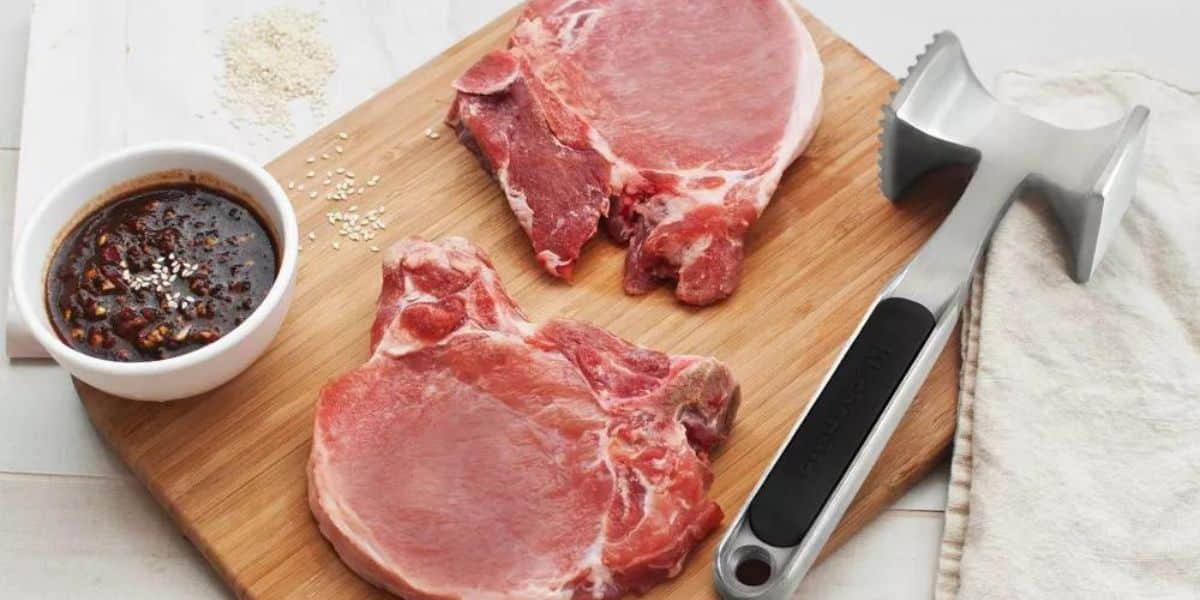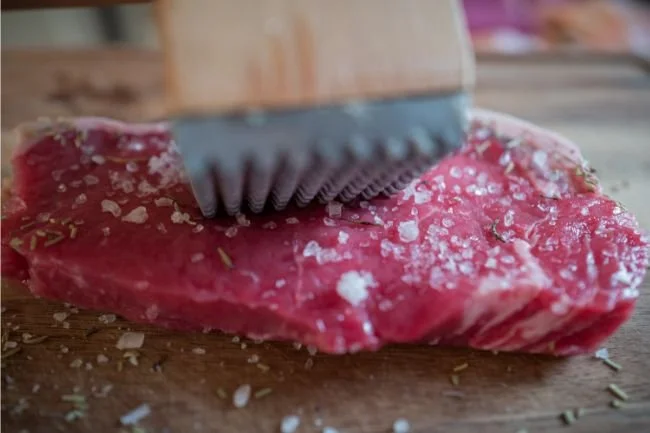How Does a Meat Tenderizer Work to Perfect Your BBQ
Written By James Morgan
For barbecue enthusiasts, the key to a mouth-watering meal often lies in the texture of the meat. And that perfect texture? Often achieved through the magical use of a meat tenderizer. But how does a meat tenderizer work? Let's dive deep into the world of tenderizing meats to uncover the science and technique behind it.

The Science Behind Meat Tenderizers
Meat is composed of muscle fibers, collagen, and fat. To make it tender, these elements have to be broken down. This is where a meat tenderizer comes into play. Here's how the different types work:
Mechanical Tenderizers
These involve physically breaking down the muscle fibers and connective tissues. Tools like mallets and blades puncture the meat, making it softer and easier to chew. This is especially useful for tougher cuts like flank steak or brisket. Wondering how to use a meat tenderizer? Click here for a step-by-step guide.
Enzymatic Tenderizers
These tenderizers use natural enzymes found in plants like papaya (papain) and pineapple (bromelain). When applied to meat, these enzymes break down proteins and collagen, resulting in a tender texture. For more insights on the pros and cons of using these enzymes, check out this guide.
Chemical Tenderizers
Often found in commercial tenderizing powders, these chemicals work in a similar way to enzymatic tenderizers by breaking down proteins. However, they might include additional ingredients and preservatives. Learn how these chemicals impact your meat here.

When and Why to Use a Meat Tenderizer
Not sure when to reach for that tenderizer? Here's a quick guide:
- Tough Cuts: Cuts like brisket, chuck, and round benefit greatly from tenderizing as they have more connective tissue.
- Before Marinating: Tenderizing meat before marinating allows the marinade to penetrate deeper, enhancing flavor.
- Quick Fix: When you're short on time but need a tender cut, tenderizers can expedite the process.
Want to know more about where to put your meat thermometer? Click here.

Step-by-Step Guide to Tenderizing Meat
Let's break down the process:
Step 1: Selecting the Right Tenderizer
Depending on the cut and type of meat, choose between a mechanical, enzymatic, or chemical tenderizer. For more on these types, see this detailed guide.
Step 2: Preparing the Meat
Trim any excess fat and pat the meat dry with paper towels. This ensures that the tenderizer can work effectively.
Step 3: Applying the Tenderizer
If using a mechanical tenderizer, apply even pressure across the meat's surface. For enzymatic or chemical tenderizers, follow the package instructions.
Step 4: Marinating (Optional)
If you plan to marinate the meat, do so after tenderizing. This allows the flavors to penetrate more deeply.
Read about how to dry out meat thermometer here.

Common Mistakes to Avoid
Even seasoned BBQ lovers make mistakes. Here are some pitfalls to watch out for:
Over-Tenderizing
Too much of a good thing can ruin the texture of your meat. Be cautious not to overuse mechanical or chemical tenderizers, as they can turn your meat mushy.
Uneven Tenderizing
Ensure you apply the tenderizer consistently across the meat's surface. Uneven tenderizing can lead to some parts being too tough or too soft.
Skipping the Resting Period
After tenderizing, let the meat rest for a few minutes. This allows the proteins to relax and results in a juicier, more flavorful cut.
Frequently Asked Questions (FAQs)
1. What is the best type of meat tenderizer to use?
It depends on the cut and your preference. Mechanical tenderizers are great for tough cuts, while enzymatic and chemical tenderizers are good for quick fixes.
2. Can I tenderize meat overnight?
Yes, but be cautious with chemical tenderizers, as they can make the meat mushy if left on too long.
3. Does a meat tenderizer affect the flavor of the meat?
Mechanical tenderizers generally do not affect the flavor. However, enzymatic and chemical tenderizers can add their own subtle tastes.
For more on what a meat tenderizer does, visit this.
As an Amazon Associate, I earn from qualifying purchases.



